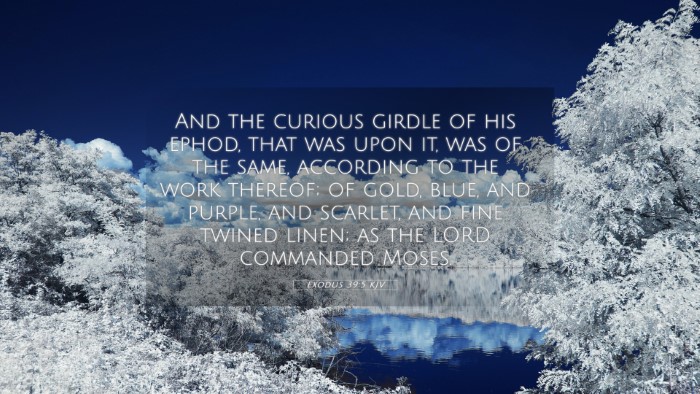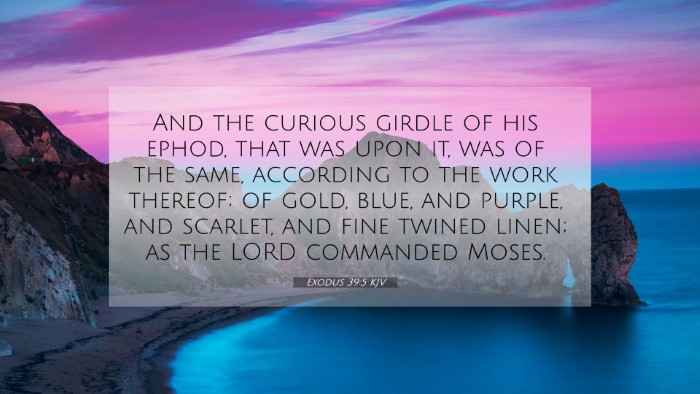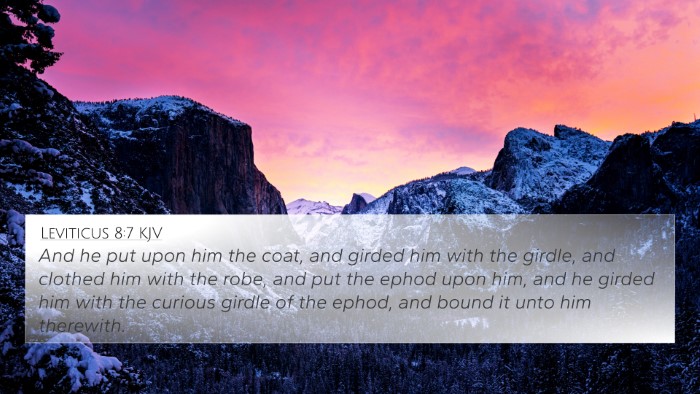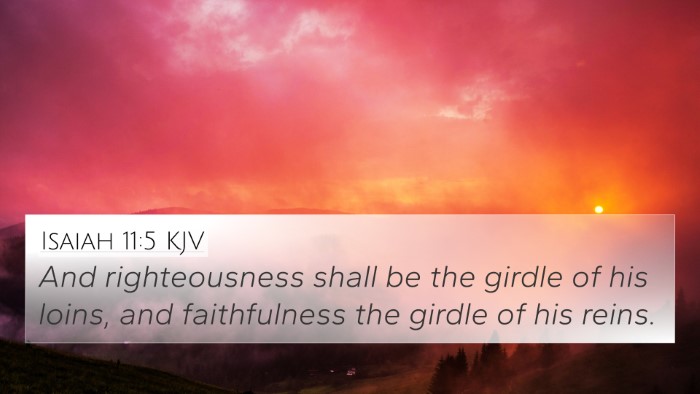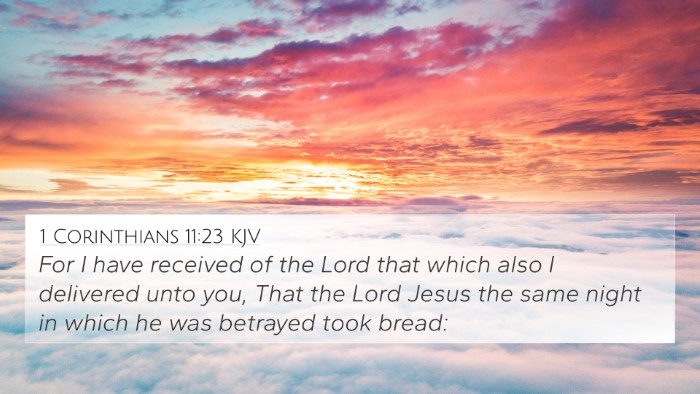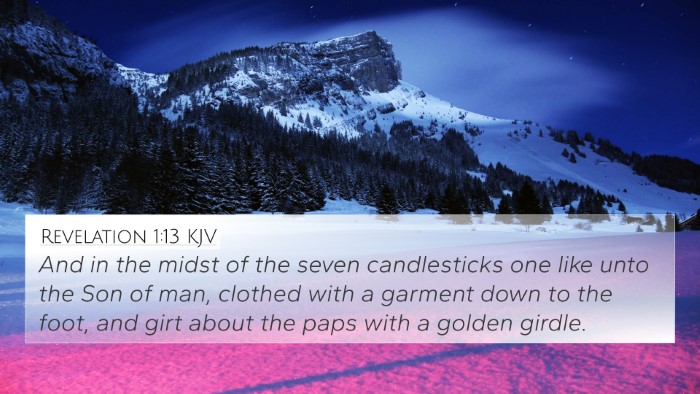Understanding Exodus 39:5
Exodus 39:5 states: "And the curious girdle of the ephod, which was upon it, was of the same, according to the work thereof; of gold, and blue, and purple, and scarlet, and fine twined linen; as the LORD commanded Moses."
This verse is part of the detailed description of the clothing worn by the priests in the Old Testament, particularly the ephod, a ceremonial garment. The ephod was adorned with various materials that held significant symbolic meanings in the context of ancient Israelite worship.
Summary of Insights from Commentaries
-
Matthew Henry emphasizes the importance of the ephod as a garment representing the priest's role in interceding for the people. He notes that the intricate design and materials signify the beauty and holiness expected in devotion to God.
-
Albert Barnes highlights that the use of precious materials such as gold, blue, purple, and scarlet signifies the richness of God's glory and the beauty of holiness. He comments on how these colors were often associated with royalty and divine presence.
-
Adam Clarke focuses on the 'curious girdle' which represents strength and how it ties the priestly garments together, both literally and figuratively. He discusses its significance in maintaining the integrity of the priestly attire as instructed by God.
Symbolism of the Materials
The materials used in the ephod carry profound symbolism:
- Gold: Represents divine glory and purity.
- Blue: Symbolizes heavenly grace and the divine nature.
- Purple: Indicates royalty and the majesty of Christ.
- Scarlet: Often signifies sacrificial blood and atonement.
- Fine Twined Linen: Represents righteousness and purity, akin to the garments of the saints.
Bible Verse Cross-References
This verse can be linked to several biblical passages that reinforce its themes of priesthood, worship, and holiness. Here are some relevant cross-references:
- Exodus 28:4 - Describes the garments that priests were to wear.
- Leviticus 8:7 - Discusses the consecration of Aaron and his sons as priests.
- Psalm 104:1-2 - Reflects on the majesty and splendor of God, akin to the garments of the ephod.
- Hebrews 5:4-6 - Discusses the priestly order of Christ, linking the Old Testament priesthood to the New Covenant.
- 1 Peter 2:9 - Describes believers as a royal priesthood, drawing parallels to the priests in the Old Testament.
- Revelation 19:8 - Speaks of the fine linen, bright and pure, representing the righteousness of the saints.
- Romans 12:1 - Encourages believers to offer their bodies as living sacrifices, linking the idea of holiness in worship.
Connections Between Bible Verses
Exodus 39:5 not only serves its immediate context in the Old Testament but also establishes connections to various themes and teachings across scriptures. Here are some insights into how this verse relates to others:
- The description of garments foreshadows Christ's ultimate sacrifice and his role as the High Priest, evident in Hebrews 4:14.
- The emphasis on curious work reflects the divine inspiration behind artistic expression in worship, similar to Exodus 35:30-35, where skilled artisans are called to serve.
- Cross-references to the priestly garments also demonstrate God's ongoing theme of separation of holiness and examination of character, seen in Matthew 22:11-14 regarding the wedding feast.
Thematic Bible Verse Connections
When exploring thematic connections, it is vital to see how Exodus 39:5 intertwines with teachings about faith, holiness, and the character of God:
- The Holiness of God - The garments of the priests were designed to reflect the supreme holiness of God, which is a recurring theme throughout scripture (see Isaiah 6:3).
- Intercession - The role of the priest was to mediate between God and man, similar to Christ's role in the New Testament (see Hebrews 7:25).
- Worship and Adoration - The beautifully crafted garments point towards the importance of worship involving both spirit and truth, reflected in John 4:24.
Tools for Bible Cross-Referencing
To delve deeper into the connections between scriptures, consider using various tools such as:
- Bible Concordances - Useful for identifying passages thematically and contextually.
- Bible Cross-Reference Guides - Can aid in finding parallel passages and their meanings.
- Online Cross-Reference Bible Study Tools - Ideal for accessing a broader range of connections quickly.
- Comprehensive Bible Cross-Reference Materials - Assist in understanding the intricate web of scripture connections.
Conclusion
Exodus 39:5 provides a rich tapestry of meaning that spans both the Old and New Testaments. Through the application of cross-referencing biblical texts, readers can gain insight into the significance of priestly garments, divine aesthetics, and the ongoing relevancy of worship practices. As one studies this verse and its connections, they enhance their understanding of the themes of holiness, mediation, and divine beauty within scripture.

